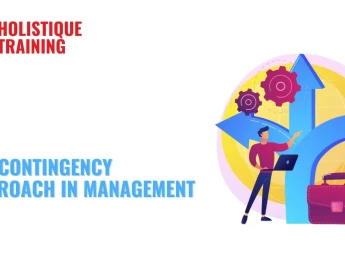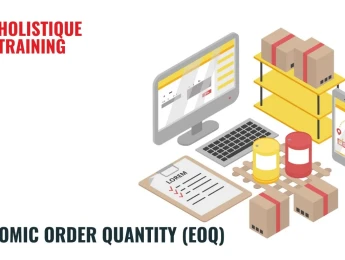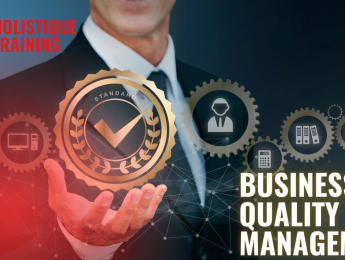- Table of Contents
- Introduction
- What Is the Contingency Approach in Management?
- History of the Contingency Approach
- What Are the 4 Contingency Theories?
- Fiedler’s Contingency Theory
- Situational Leadership Theory
- Path-Goal Theory
- Decision-Making Theory
- Characteristics of the Contingency Approach
- Context-Dependence:
- Flexibility:
- Situational Analysis:
- Pragmatism:
- Integration of Multiple Theories:
- Benefits of the Contingency Approach
- Improved Decision-Making
- Enhanced Flexibility
- Increased Relevance
- Greater Employee Engagement
- Better Resource Allocation
- Examples of the Contingency Approach in the Workplace
- Example 1: Manufacturing Industry
- Example 2: Healthcare Sector
- Example 3: Technology Startups
- How Can HR Apply the Contingency Approach at Work?
- Tailoring Training and Development Programs:
- Flexible Recruitment Strategies:
- Adapting Performance Management Systems:
- Table: Metrics to measure the effectiveness of the contingency approach
- Customised Employee Engagement Initiatives:
- Strategic Workforce Planning:
- Implementing Six Sigma in the Contingency Approach
- How to Know if Your Business Needs the Contingency Approach
- Organisational Complexity:
- Diverse Workforce:
- Rapidly Changing Environment:
- Need for Innovation:
- Desire for Customisation:
- Using Software to Make the Application Process More Effective
- Data Analytics Tools:
- HR Management Systems (HRMS) :
- Collaboration and Communication Tools:
- Decision-Making Software:
- Leadership Development Platforms:
- Conclusion
Introduction
Organisations are dynamic entities, constantly influenced by various internal and external factors. This variability challenges the idea that one management style fits all situations. Instead, it prompts a more adaptable, situational approach to leadership and decision-making. This blog post delves into the concept of the contingency approach in management, exploring its origins, theories, characteristics, and practical applications in the workplace. We will also discuss how Human Resources (HR) departments can leverage this approach to enhance organisational performance and whether your business could benefit from its adoption. Additionally, we will examine software's role in streamlining the application of the contingency approach.
What Is the Contingency Approach in Management?
The contingency approach in management is a framework that suggests that the effectiveness of leadership, decision-making, and organisational strategies depends on the specific circumstances or context in which they are applied. Rather than adhering to a one-size-fits-all methodology, the contingency approach advocates for flexibility, arguing that the best management style or organisational strategy is contingent upon factors such as the environment, task, team dynamics, and organisational culture.
This approach challenges traditional, universalist views of management, which propose specific rules or practices that are universally applicable. Instead, it encourages managers to assess the unique aspects of their situation and choose a course of action that is most likely to yield successful outcomes. The contingency approach recognises that different situations require different strategies, and the key to effective management lies in understanding and adapting to these situational variables.
History of the Contingency Approach
The roots of the contingency approach can be traced back to the mid-20th century, during a period when management theory was undergoing significant evolution. Early management theories, such as Frederick Taylor's scientific management and Henri Fayol's administrative principles, emphasised a universal approach to management practices. However, as organisations grew in complexity, scholars and practitioners began to realise that these rigid, one-size-fits-all approaches were insufficient for addressing the diverse challenges faced by modern organisations.
In response to the limitations of earlier theories, researchers in the 1950s and 1960s began to explore the idea that management effectiveness depends on the interaction between management practices and the specific context or environment. One of the pioneers of this thinking was Fred Fiedler, whose contingency theory of leadership was among the first to suggest that leadership effectiveness is contingent upon situational factors. His work laid the foundation for a broader movement towards contingency-based thinking in management.
Over time, this approach gained traction as more scholars developed contingency theories in various management areas, including leadership, organisational design, and decision-making. The contingency approach became a central management research theme, influencing academic thought and practical management strategies. Today, it remains a vital concept in understanding how organisations can navigate the complexities of the modern business environment.
What Are the 4 Contingency Theories?
The contingency approach in management is supported by several key theories that provide frameworks for understanding how situational factors influence management effectiveness. Four of the most prominent contingency theories include Fiedler’s Contingency Theory, Situational Leadership Theory, Path-Goal Theory, and Decision-Making Theory.
Fiedler’s Contingency Theory
Fred Fiedler’s Contingency Theory is one of management's earliest and most influential contingency theories. According to Fiedler, a leader's effectiveness is determined by two primary factors: the leader’s style and the degree to which the situation gives the leader control and influence. Fiedler identified two types of leadership styles: task-oriented and relationship-oriented.
- Task-oriented leaders focus on accomplishing tasks and achieving goals. They tend to be more directive and structured in their approach.
- Relationship-oriented leaders prioritise building relationships and supporting their team members. They are more collaborative and supportive in their leadership style.
Fiedler argued that no single leadership style is universally effective. Instead, a leader's effectiveness depends on how well their style matches the specific situation. He identified three key situational factors that influence leadership effectiveness:
- Leader-member relations – the degree of trust and respect between the leader and team members.
- Task structure – the clarity and structure of the tasks being performed.
- Position power – the level of authority and power the leader has within the organisation.
Fiedler’s Contingency Theory suggests that leaders should assess these situational factors and adapt their style or modify the situation to improve their effectiveness.
Situational Leadership Theory
Situational Leadership Theory, developed by Paul Hersey and Ken Blanchard, builds on the idea that effective leadership depends on the situation. This theory emphasises the importance of adapting leadership style based on the team members' maturity or development levels.
Hersey and Blanchard identified four leadership styles, each suited to different levels of team member maturity:
- Telling (high task-low relationship) – used when team members are inexperienced or lack confidence. The leader provides clear instructions and closely supervises the work.
- Selling (high task-high relationship) – appropriate when team members are developing but still need guidance. The leader is more supportive while still directing tasks.
- Participating (low task-high relationship) – best for capable team members who may lack motivation. The leader facilitates and supports decision-making.
- Delegating (low task-low relationship) – suitable for highly capable and motivated team members. The leader delegates responsibility and allows autonomy.
Situational Leadership Theory suggests that leaders must assess the development level of their team members and adjust their leadership style accordingly. This flexibility ensures that team members receive the appropriate support and direction to succeed.
Path-Goal Theory
Robert House's path-goal theory focuses on how leaders can motivate their team members to achieve goals by aligning their leadership style with the team's needs and the task's nature. This theory suggests that the leader’s role is to clarify the path to goal achievement, remove obstacles, and provide the necessary support and rewards.
House identified four leadership styles that leaders can use based on the situation:
- Directive leadership – the leader provides clear instructions and expectations, making the path to the goal explicit.
- Supportive leadership – the leader shows concern for team members’ well-being and creates a supportive environment.
- Participative leadership – the leader involves team members in decision-making, encouraging input and collaboration.
- Achievement-oriented leadership – the leader sets challenging goals and expects high performance while providing confidence and support.
Path-Goal Theory emphasises the importance of understanding team members' needs and the task's demands to select the most effective leadership style. By doing so, leaders can enhance motivation and increase the likelihood of goal attainment.
Decision-Making Theory
Decision-making theory, particularly the contingency model developed by Victor Vroom and Phillip Yetton, explores how leaders should involve team members in the decision-making process based on situational factors. This theory is sometimes referred to as the Vroom-Yetton model.
The model identifies five decision-making styles that range from autocratic to democratic:
- Autocratic I (AI) – the leader makes the decision alone using available information.
- Autocratic II (AII) – the leader gathers information from team members but decides alone.
- Consultative I (CI) – the leader consults with individual team members and then decides.
- Consultative II (CII) – the leader consults with the group and then decides.
- Group II (GII) – the leader and team members decide together through consensus.
The Vroom-Yetton model provides a framework for leaders to determine the most appropriate level of team involvement in decision-making based on factors such as the decision's importance, the need for team commitment, and the level of information available. This contingency-based approach helps leaders make more effective decisions by considering the specific context and the potential impact on the team.
Aspect | Contingency Approach | Classical Approach | Behavioural Approach |
Flexibility | Adapts to specific situations and contexts | Follows rigid, one-size-fits-all principles | Considers individual behaviours and motivations. |
Decision Making | Context-driven, varies by situation | Centralised, top-down decision-making. | Encourages participative decision-making. |
Leadership Style | Situational leadership based on context | Fixed, hierarchical leadership | Focuses on relationship-oriented leadership. |
Employee Focus | Balances employee needs with situational demands | Less focus on individual employee needs. | High Emphasis on employee well-being and morale. |
Organisational Structure | Flexible, adjusts to fit circumstances. | Rigid, formalised structure | Dynamic, Promotes informal networks and teamwork |
Table: Comparing the Contingency Approach with Other Management Approaches
Characteristics of the Contingency Approach
The contingency approach in management is characterised by several key principles that distinguish it from other management theories. These characteristics emphasise the need for flexibility, context-awareness, and situational analysis in decision-making and leadership.
Context-Dependence
The contingency approach is inherently context-dependent, meaning that the effectiveness of management practices and leadership styles is contingent upon the specific circumstances. Managers must consider various factors, such as the organisational environment, the nature of the task, the characteristics of the team, and the external market conditions when making decisions.
Flexibility
Flexibility is a core characteristic of the contingency approach. Managers are encouraged to adapt their strategies, leadership styles, and decision-making processes based on the changing needs of the organisation and the external environment. This adaptability allows organisations to respond more effectively to challenges and opportunities.
Situational Analysis:
The contingency approach requires managers to conduct thorough situational analyses before making decisions. This involves assessing the specific variables that may influence the outcome, such as the level of uncertainty, the complexity of the task, the availability of resources, and the capabilities of the team members. By understanding these variables, managers can choose the most appropriate course of action.
Pragmatism:
The contingency approach is pragmatic in nature. It focuses on what works best in a given situation rather than adhering to rigid principles or theories. Managers are encouraged to be practical and results-oriented, selecting the strategies that are most likely to achieve the desired outcomes.
Integration of Multiple Theories:
The contingency approach often involves integrating insights from various management theories to address the organisation's specific needs. Depending on the situation, this may include classical management, behavioural management, and systems theory elements. Drawing on multiple perspectives allows managers to create more comprehensive and effective strategies.
Benefits of the Contingency Approach
The contingency approach offers several benefits to organisations and managers, making it a valuable framework for navigating the complexities of modern business environments.
Improved Decision-Making
Managers can make more informed and effective decisions by considering the specific context and situational variables. The contingency approach encourages a thorough analysis of the factors that may impact a decision's success, leading to better outcomes.
Enhanced Flexibility
The flexibility inherent in the contingency approach allows organisations to adapt to changing circumstances more effectively. This adaptability is particularly valuable in today’s fast-paced business environment, where organisations must respond quickly to shifts in market conditions, technological advancements, and competitive pressures.
Increased Relevance
The contingency approach ensures that management practices and leadership styles are relevant to the organisation's needs and environment. This relevance increases the likelihood of success, as strategies are tailored to fit the unique characteristics of the situation.
Greater Employee Engagement
Managers can create a more supportive and engaging work environment by adopting a contingency-based leadership style. When leadership is aligned with the needs and preferences of team members, employees are more likely to feel valued, motivated, and committed to the organisation.
Better Resource Allocation
The contingency approach encourages managers to allocate resources more effectively by considering each situation's specific requirements. This leads to more efficient resource use and reduced waste, ultimately improving organisational performance.
Examples of the Contingency Approach in the Workplace
The contingency approach is widely used in various industries and organisational settings. Here are a few examples that illustrate how this approach can be applied in the workplace:
Example 1: Manufacturing Industry
In a manufacturing company, production managers may need to adjust their management style based on the complexity of the production process and the workers' skill level. For example, a task-oriented leadership style may be most effective in a highly automated production line where tasks are repetitive and well-defined. However, a relationship-oriented leadership style may be more appropriate in a more complex production environment where workers must collaborate and solve problems.
Example 2: Healthcare Sector
The contingency approach can improve patient care and organisational efficiency in the healthcare sector. For instance, a directive leadership style may be necessary in a high-pressure emergency room environment to ensure quick decision-making and clear communication. However, a participative leadership style may be more effective in a more routine outpatient setting, as it allows healthcare professionals to collaborate and contribute to patient care decisions.
Example 3: Technology Startups
In a technology startup, the contingency approach can help leaders navigate the challenges of rapid growth and innovation. For example, an autocratic decision-making style may be necessary to establish a clear vision and direction during the startup's early stages. As the company grows and the team becomes more experienced, a consultative or participative decision-making style may be more appropriate to encourage creativity and collaboration.
How Can HR Apply the Contingency Approach at Work?
Human Resources (HR) departments are crucial in applying the organisation's contingency approach. By adopting a contingency-based mindset, HR professionals can develop more effective strategies for talent management, employee development, and organisational culture.
Tailoring Training and Development Programs:
HR can use the contingency approach to design training and development programs that are aligned with the specific needs of different departments, teams, or individual employees. For example, leadership training programs can be customised based on the leadership styles that are most effective in different organisational contexts.
Flexible Recruitment Strategies:
The contingency approach can also inform recruitment strategies. HR professionals can assess the specific skills and attributes required for success in different roles and tailor their recruitment processes accordingly. Depending on the context, this may involve using various selection criteria, interview techniques, or assessment tools.
Adapting Performance Management Systems:
HR can apply the contingency approach to performance management by designing systems that are responsive to the unique challenges and opportunities faced by different teams or departments. For example, performance metrics may be adjusted based on the complexity of the tasks being performed or the level of uncertainty in the external environment.
Metric | Description |
Employee Engagement | Measures employee satisfaction and involvement |
Decision-Making Efficiency | Evaluates speed and accuracy of decisions made |
Adaptability | Assesses responsiveness to changing environments |
Leadership Effectiveness | Gauges the impact of leadership on team performance |
Organisational Performance | Tracks overall business outcomes and success rates |
Table: Metrics to measure the effectiveness of the contingency approach
Customised Employee Engagement Initiatives:
HR can use the contingency approach to develop employee engagement initiatives tailored to different employee groups' specific needs and preferences. For example, flexible work arrangements may be more important for employees in certain roles or life stages, while professional development opportunities may be a priority for others.
Strategic Workforce Planning:
HR can apply the contingency approach to workforce planning by considering the specific contingencies that may impact the organisation’s future talent needs. This may involve scenario planning, where HR develops different workforce plans based on potential changes in the external environment, such as shifts in market demand, technological advancements, or regulatory changes.
Implementing Six Sigma in the Contingency Approach
Integrating Six Sigma principles within the contingency approach can significantly enhance an organisation’s ability to improve processes and achieve optimal results. Six Sigma, a data-driven methodology focused on reducing defects and improving quality, aligns well with the contingency approach by offering a structured yet flexible framework that can be adapted to various organisational contexts.
When applying Six Sigma through a contingency lens, organisations can tailor their improvement initiatives to address specific challenges and opportunities. For instance, the DMAIC (Define, Measure, Analyse, Improve, Control) cycle in Six Sigma can be adapted based on the problem's complexity, the team's maturity, and the organisational culture. This ensures that Six Sigma projects are effective and aligned with the organisation's unique needs and conditions.
Moreover, by considering situational variables—such as the organisation's size, industry standards, and employees' skill levels—managers can decide on the most appropriate Six Sigma tools and techniques to employ. For example, in a highly regulated industry, more stringent controls might be necessary, while in a fast-paced startup, speed and agility might take precedence.
This integration ensures that Six Sigma initiatives are not implemented as a one-size-fits-all solution but are customised to maximise their impact within the organisation's specific context. By combining the rigour of Six Sigma with the adaptability of the contingency approach, organisations can achieve continuous improvement and maintain a competitive edge in a dynamic business environment.
How to Know if Your Business Needs the Contingency Approach
While the contingency approach offers many benefits, it may only suit some organisations or situations. Here are some factors to consider when determining whether your business could benefit from adopting the contingency approach:
Organisational Complexity:
The contingency approach may be particularly valuable if your organisation operates in a complex and dynamic environment where multiple variables influence outcomes. This approach allows for flexibility and adaptation to changing circumstances, making it well-suited for complex organisations.
Diverse Workforce:
If your organisation has a diverse workforce with varying skills, experiences, and preferences, the contingency approach can help tailor management practices to meet the needs of different employee groups. This can enhance employee engagement and performance.
Rapidly Changing Environment:
Organisations operating in rapidly changing environments, such as technological innovation or shifting market conditions, may benefit from the contingency approach. Adapting management practices to changing circumstances can help the organisation remain competitive and responsive to new opportunities.
Need for Innovation:
The contingency approach can support a more flexible and adaptive management style if your organisation prioritises innovation and creativity. This approach allows leaders to experiment with different strategies and leadership styles, fostering an environment where innovation can thrive.
Desire for Customisation:
The contingency approach may be a good fit if your organisation values customisation and personalisation in its management practices. This approach allows for tailoring strategies and practices to meet the organisation's and its employees' unique needs.
Using Software to Make the Application Process More Effective
In today’s digital age, software tools can significantly enhance the effectiveness of the contingency approach. By leveraging technology, organisations can streamline the application of contingency-based management practices and improve decision-making processes.
Data Analytics Tools:
Data analytics software can help managers and HR professionals gather and analyse data on key situational variables, such as employee performance, market trends, and organisational dynamics. This data can inform contingency-based decision-making by providing insights into the specific factors influencing outcomes.
HR Management Systems (HRMS) :
HRMS software can support the application of the contingency approach by providing tools for customising HR processes, such as recruitment, performance management, and employee engagement. For example, HRMS platforms can offer flexible performance appraisal systems that allow for customising evaluation criteria based on different departments' or teams' unique needs.
Collaboration and Communication Tools:
Collaboration and communication software can facilitate the application of the contingency approach by enabling more effective communication and collaboration among team members. For example, project management platforms can support contingency-based leadership by allowing leaders to adjust their management style and communication approach based on the team's needs and the nature of the task.
Decision-Making Software:
Decision-making software can help managers apply the Vroom-Yetton model of contingency-based decision-making by providing tools for assessing situational variables and determining the most appropriate decision-making style. These tools can guide leaders through decision-making, ensuring they consider the relevant contingencies before deciding.
Leadership Development Platforms:
Leadership development software can support the application of the contingency approach by offering customised training programs that align with the specific needs of different leadership styles and situations. These platforms can provide leaders with the tools and resources they need to develop the flexibility and adaptability required for effective contingency-based leadership.
Conclusion
The contingency approach in management offers a flexible and adaptive framework for navigating the complexities of modern organisations. By considering the specific context and situational variables, managers can make more informed decisions, adopt more effective leadership styles, and tailor organisational strategies to meet the unique needs of their organisation. Whether through HR practices, leadership development, or decision-making processes, the contingency approach provides a valuable tool for enhancing organisational performance and achieving success in a dynamic business environment. With the support of modern software tools, organisations can further enhance the effectiveness of this approach, ensuring that they remain agile, responsive, and competitive in an ever-changing world. To complement this approach, our course "Key Motivation Techniques to Aid Performance" equips managers with practical strategies to motivate their teams effectively, driving higher performance and engagement in any organisational context. Enrol now!

























